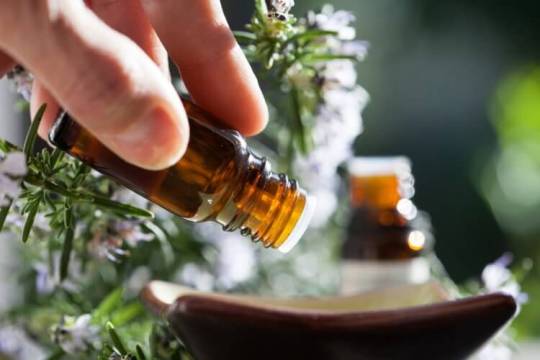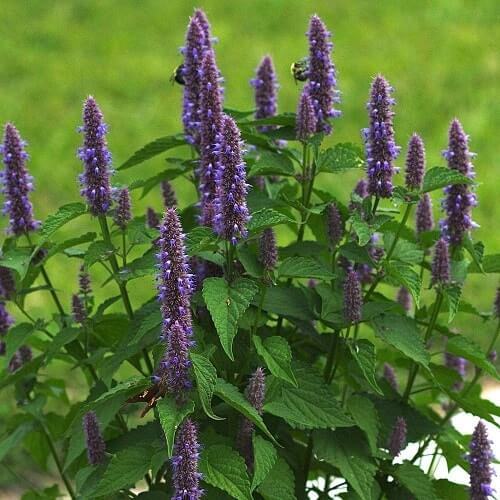#howdoesaromatherapywork
Explore tagged Tumblr posts
Text
Energy and Aromatherapy

Energy and Aromatherapy

Energy and Aromatherapy The rigor of modern lifestyle, in which most of the people live a busy life, sleeps too little, works too much, eats not in time and poorly. All of these factors depleting our energy. AROMATHERAPY is one of the most ancient healing methods and is the science of utilizing aromatic essences extracted from plants for health and healing. The natural essences are used to balance and harmonize the energies that operate within us and promote the health of the body, mind, and spirit. Because the resources (mostly flowers, herbs, seeds, and spices) are readily available, aromatherapy has been practiced for thousands of years. However, very little scientific study has been done until recently. So even though the data available does not yet allow aromatherapy to be adopted into mainstream medical practice, which demands evidence-based claims, the available scientific information on the essences, or essential oils as they are known, may surprise you.
What is Aromatherapy?
You may think of aromatherapy as just the newest candle-selling trick, but this method has actually been around for centuries. Aromatherapy is a holistic healing method that combines the science of essential oils with the art of listening to the body and applying the appropriate essences to re-harmonize the imbalances. It helps improving health and emotions using the pure essence extracted from flowers, seeds, shrubs or other parts of the plant. These essences are known as essential oils. These essential oils are a highly volatile liquid that they need to be stored in a special container. The potent chemicals in these essential oils are responsible for their therapeutic powers. The particles of evaporated oil can be breathed in using a spray or diffuser method and absorbed into the bloodstream. Essential oils can also enter the body through the skin merely by applying them as massage oil, incorporated into soaps, body care item. Some oils are effective in healing cuts and bruises, while others have an affinity for respiratory or digestive conditions, and still, others alter psychological states. Such oils can give you a boost of energy if you know how to use them. They even can be used as insect repellents. Essential Oils for Energy As a rule, essential oils with spicy or citrus scents are the most popular in combating overtiredness. There are two reasons to explain this. One is that such smells just make you feel fresh and perky. Consider for example how the fresh scent of oranges in the morning helps you wake up. The other reason is that these oils contain similar chemicals, all of which stimulate the nerves and emotions. If you are having trouble concentrating after long hours of work or studying, lime oil is an excellent energizer. It refreshes the mind and helps with focus. It blends well with basil, which helps stimulate both the brain and body. The spicy scent of ginger has an invigorating effect on the nerves, so it can be especially beneficial if you are short on sleep. Try combining it with grapefruit, an oil known for its reviving capabilities. Since you never know when you might need a boost of energy, all of the aromatherapy suggestions here are designed to take with you or use in a matter of minutes. Remember to follow the dosage recommendations carefully to avoid adverse reactions. All of the above-mentioned oils are generally considered safe, but applying too much to the skin can be dangerous. Also, certain essentials can give you a headache if you overindulge in their fragrances. Above all, never use these or any other oils internally and consult your physician beforehand if you have a serious medical condition. In this way, you will ensure that you do not accidentally aggravate your condition. Keeping these precautions in mind, you can start using energizing aromatherapy. It is best for you to study the safety precautions of using Aromatherapy Essential Oils beforehand.
Usage Ideas for Aromatherapy
If you take a shower every morning to wake up, this is a great time to incorporate revitalizing essential oils. Add two drops of oil (or a combination of two) to each half-cup of basic body wash or shampoo and mix thoroughly. Then, simply use the product as normal and enjoy! The same method works equally well in a warm bath. Add six drops to a tablespoon of bubble bath and stir the blend into a full tub for instant aromatherapy. You can combine the essential oil with milk as well to give your bath extra moisturizing power. As you soak, breathe deeply and feel your mind come alive again. To perk up the atmosphere of your home or enliven the air during a cram session, try using an aromatherapy room spray. This alcohol-based blend is easy to make and is a great replacement for store-bought air fresheners. To make it, you will need thirty drops of your favorite blend of essential oils, twelve ounces of bottled water, and a tablespoon of vodka. Combine the ingredients in a spray bottle, cap, shake well, and use. Keep a bottle at work, in the car, or anywhere else where you spend a lot of time. Using essential oils to freshen your room will add energy to your life, and at the same time, ensure that the dust and dirt become less harmful. This should be preferred to using chemical deodorants that may be harmful and worsen our polluted environment. Essential oils are also widely used as massage oils An aromatherapy massage is the alternative therapeutic technique which combines the natural therapeutic properties of the essential oils (highly concentrated plant oils) and the healing power of massage therapy. Aromatherapy massage not only has powerful physical, emotional and mental effects but it is also described as a great relaxing and rejuvenating experience. Aromatherapy is one of the wonderful alternative treatments Instead of bombarding your body with unhealthy stimulants, you can use Mother Nature’s gifts to feel energized and focused in any situation. Beyond the few mentioned here, there are dozens of other revitalizing essential oils that you can try. Try to find the best way of using essential oils for yourself, you will surely love it! Scientific evidence for aromatherapy Modern scientific research has shown that there are several reasons why essential oils can improve our health. After the war, Dr Valnet and his students did further research and found that essential oils have powerful anti-infective capabilities, improve the immune system, and also enhance the delivery of nutrients into the cells. More recent studies have shown that they have amazingly high antioxidant properties. We are all familiar with the importance of having enough antioxidants to fight the harmful free radicals that damage our cells and slowly cause us to age and develop chronic degenerative diseases. We know that fruits and vegetables are rich in antioxidants, and among them, berries have among the highest contents of antioxidants. But even the best fruits do not come close to the ORAC power of essential oils. The weakest of them have ORAC values above 2,000. The lavender essential oil has an ORAC value of nearly 3,700. Lemon essential oil is over 6,000, lemongrass nearly 18,000, cinnamon bark over 100,000 and, hold your breath – clove essential oil has ORAC power of over 10 million! With that kind of capacity to knock out harmful free-radicals, we should not be surprised at all that essential oils can heal. Different essential oils have different properties like antiseptic, antiviral, antibacterial, antifungal and antiparasitic. We need to carefully select the proper essential oils that meet our needs. Follow us: Facebook, Twitter, Instagram, Pinterest Read the full article
#Aromatherapy#aromatherapybasics#aromatherapyfacial#aromatherapyfacialdvd#aromatherapyfacialoils#aromatherapyforanxiety#aromatherapyforstress#aromatherapyhumidifier#AromatherapyMassage#Aromatherapyoils#aromatherapyorganisation#aromatherapyperfume#aromatherapyrecipes#aromatherapysoaps#diyaromatherapy#EnergyandAromatherapy#EnergyAromatherapy#howaromatherapyworks#howdoesaromatherapywork#lavenderaromatherapy#makingaromatherapyoils#tazekaaromatherapy
0 notes
Text
Understanding Botany for Aromatherapy: What is a Hybrid Plant?

Understanding Botany for Aromatherapy: What is a Hybrid Plant?

Understanding Botany for Aromatherapy: What is a Hybrid Plant? The term hybrid may conjure up an image of something that is not “real” — and in some ways, this may be true. However, with regard to plants, hybrid plants, depending upon your point of view, are just as “real” as original plants and, furthermore, when used as an essential oil, hybrid plants have the potential for therapeutic properties, too; hybrid essential oils are not the same as synthetic, or adulterated, essential oils which are chemically made, or altered, in a laboratory or process plant. Definition of a Hybrid Plant A hybrid plant is an interspecies plant; that is, a plant that has been crossed between two different species but within the same genus (Falsetto, 2014). There are many different hybrid plants. And you will find many hybrid plants within the world of gardening; breeders attempt to create an “ideal” plant for specific climates and to produce the “best” features of the plant. The hybrid plant will share common characteristics with both of its parent plants. Hybrids are sometimes created naturally in the wild through self-pollination, but many are usually specifically bred with human intervention. Although essential oils were originally extracted from wild plants, today, through commercialization of the industry, many common (or endangered) plant species used for essential oil extraction, are bred specifically for that use, in order to protect the wild resources. Along the way, plants have also been specifically bred to create other species – of which, several are used in aromatherapy practice. Describing a Hybrid Plant in Botanical Terms Today, all plants are cataloged using a scientific plant classification system. The system, originally developed by Carolus Linneaus (1707 – 1778), records all names in Latin, in a two-part binomial name. For example, true lavender is recorded as Lavandula angustifolia (with various synonyms). A hybrid plant will have the letter x inserted between the two parts of its binomial name; the insertion of the letter x indicates that the plant is a hybrid, or interspecies, plant. Common Hybrid Plants in Aromatherapy You might be surprised to learn that some of the common essential oils used in aromatherapy are actually extracted from hybrid plants. Examples of hybrid plants that produce essential oils are: lavender (Lavandula x intermedia) – a cross between true lavender (Lavandula angustifolia) and spike lavender (Lavandula latifolia). Lavandin shares common characteristics of both of its parent plants; the essential oil is similar in use to true lavender, but has a different chemical make-up and a sharper aroma, with therapeutic properties beneficial for respiratory and muscular problems (Lawless, 1995). Grapefruit (Citrus x paradisi) – a cross between the shaddock or pomelo (Citrus maxima) and sweet orange (Citrus sinensis). Its hybridization is not clearly documented but records indicate it was probably bred sometime in the eighteenth century. Peppermint (Mentha x piperita) – the parents of the hybrid plant peppermint are cited by many resources as spearmint (Mentha spicata) and water mint(Mentha aquatica) but Heilmeyer writes that horse mint (Mentha longifolia) is a parent of peppermint too as it was in common use by gardeners during the time of hybridization (1696, in England) (Heilmeyer, nd). Peppermint essential oil contains some strong chemical components and one of its parent plants, spearmint, is often recommended in preference to peppermint. Rose (Rosa x damascena) – the rose is such a common plant, with many species and hybrids, that many may not realize that the damask rose is a hybrid of musk rose (Rosa moscheta) and Gallic rose (Rosa gallica). In addition, there are several other rose species used as an essential oil, so it is important to know which species (or hybrid) you are using. Even though many rose species essential oils share similar therapeutic properties, their aroma can vary. amzn_assoc_placement = "adunit0"; amzn_assoc_search_bar = "true"; amzn_assoc_tracking_id = "gardensnurs0b-20"; amzn_assoc_search_bar_position = "bottom"; amzn_assoc_ad_mode = "search"; amzn_assoc_ad_type = "smart"; amzn_assoc_marketplace = "amazon"; amzn_assoc_region = "US"; amzn_assoc_title = "Shop Related Products"; amzn_assoc_default_search_phrase = "Aromatherapy"; amzn_assoc_default_category = "Beauty"; amzn_assoc_linkid = "c3be52d1991620937c77fdec3f76ee57"; amzn_assoc_default_browse_node = "3760911"; Follow us: Facebook, Twitter, Instagram, Pinterest (adsbygoogle = window.adsbygoogle || ).push({}); Read the full article
#Aromatherapy#aromatherapybasics#aromatherapycourse#aromatherapydiffuser#aromatherapyessentialoils#aromatherapyfacial#aromatherapyhealing#aromatherapymasage#AromatherapyMassage#Aromatherapyoils#aromatherapyperfume#aromatherapyrecipes#aromatherapysoaps#aromatherapytraining#aromatherapyuses#diyaromatherapy#howaromatherapyworks#howdoesaromatherapywork#hybrid#hybridplants#lavenderaromatherapy#plants#tazekaaromatherapy#whatisaromatherapy
0 notes